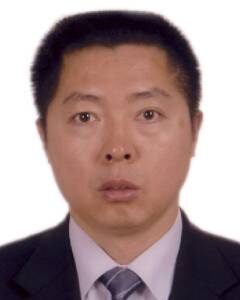Until 2001, the PRC operated a one-track system for the recognition of well-known trademarks, under which well-known trademarks were recognized by administrations for industry and commerce. After 2001, people’s courts also began to recognize well-known trademarks, giving rise to a two-track system that includes both administrative and judicial recognition of well-known trademarks.

Managing Partner
Chang Tsi & Partners
As compared to administrative recognition, the judicial recognition of well-known trademarks has the following features.
Timeliness: trial times are usually six months at first instance and three months at appeal to produce a final decision.
Authority: a people’s court has final authority to adjudicate in a legal dispute, and a judgment rendered by it is final.
Multiple forms of protection: during a court procedure, it is possible, by asserting that a trademark is well-known, to demand that an infringer halt infringement; compensate for losses; destroy infringing products, machinery and equipment used to manufacture the infringing products; eliminate the effects of infringement; and meet the court costs and reasonable expenses incurred by the plaintiff in halting infringement.
Enforceability: if a defendant refuses to implement a judgment of the court, the rights holder can apply to a people’s court for enforcement.
Legal basis

Partner
Chang Tsi & Partners
Article 13 of the PRC Trademark Law prohibits the use of a trademark which constitutes a reproduction, imitation or translation of another’s well-known trademark. Article 14 sets out the criteria for the recognition of well-known trademarks.
The Supreme People’s Court Several Issues Concerning the Application of the Law to the Trial of Civil Dispute Cases Involving Trademarks Interpretations specifies that “reproducing, imitating or translating another’s registered well-known trademark or its main part and using it as a trademark on non-identical or dissimilar goods thereby misleading the public and potentially prejudicing the interests of the registrant of the well-known trademark” falls under the prohibited acts specified in article 52(5) of the PRC Trademark Law that cause other harm to another’s exclusive right to use a registered trademark.
The Interpretations also comprehensively address such issues as the meaning of “well-known trademark”, the criteria for acceptance of cases, the criteria for the recognition of well-known trademarks and the burden of proof.
Principles of recognition
Passive recognition: a people’s court will consider recognizing a trademark as well-known only if the concerned party expressly puts forward a claim for such recognition during a legal action. A people’s court will not make such a determination on its own initiative.
Case by case recognition: the judicial recognition of a well-known trademark, and determination of how it may be protected, are case specific. The recognition of a well-known trademark in a specific case is legally effective in that case, but does not necessarily have any application in other cases.
Recognition based on necessity: during a court case, determination of whether a trademark is well-known may be made where remedies would be unavailable by other legal means and well-known status is necessary to afford greater protection. Any such recognition of a trademark as well-known should be necessary for the trial of the case, so as to avoid abuse of the system of judicial recognition.
Types of cases
A people’s court may make a judicial determination as to whether a trademark is well known, at the request of a concerned party and while taking into account the foregoing principles, in the following three types of cases:
- a trademark infringement action instituted by a plaintiff on the grounds that the defendant’s registered trademark violates article 13 of the PRC Trademark Law, being a reproduction, imitation or translation of the plaintiff’s well-known trademark;
- a trademark infringement action or unfair competition action instituted by a plaintiff on the grounds that the defendant’s enterprise name is identical or similar to the plaintiff’s well-known trademark; or
- where the plaintiff has instituted a civil action on the grounds that use of the defendant’s unregistered trademark infringes the plaintiff’s exclusive right to use its registered trademark, and a defence is mounted or counter-claim instituted by the defendant on the grounds that the plaintiff’s registered trademark is a reproduction, imitation or translation of the defendant’s prior unregistered well-known trademark.
Competent court and recordal
In civil disputes involving the recognition of well-known trademarks, the intermediate people’s court of the provincial capital or major municipality, or the intermediate people’s court of a district under a municipality directly under the central government, has jurisdiction. For another intermediate people’s court to have jurisdiction over such a civil dispute, the approval of the Supreme People’s Court is required.
A recordal system is implemented in respect of civil dispute cases in which trademarks are recognized as well-known. Within 20 days of the date on which a legal document in a case in its jurisdiction involving the recognition of a well-known trademark enters into effect, the higher people’s court is required to submit it to the intellectual property division of the Supreme People’s Court for the record.
Burden of proof and recognition
The burden of proving that a trademark is well-known falls on the party that makes such an assertion. However, the rule on self-incrimination in the Evidence in Civil Procedures Several Provisions does not apply.
The criteria for the recognition of well-known trademarks are mainly found in Article 14 of the PRC Trademark Law:
- the degree of fame of the trademark among the relevant section of the public;
- the length of continuous use of the trademark;
- the continuous length, degree and geographical scope of the publicity for the trademark;
- the extent to which the trademark has been protected as a well-known trademark in China or other countries; and
- other factors associated with the trademark’s being well-known, such as the reputation of the trademark in the market.
Simon Tsi is managing partner and Gao Yan is a partner at Chang Tsi & Partners.

7-8th Floor Tower A, Hundred Island Park,
Bei Zhan Bei Jie Street, Xicheng District, Beijing
Postal code: 100044
Tel: + 86-10-8836 9999
Fax: + 86-10-8836 9996
E-mail: mail@ctw.com.cn
www. ctw.com.cn





















